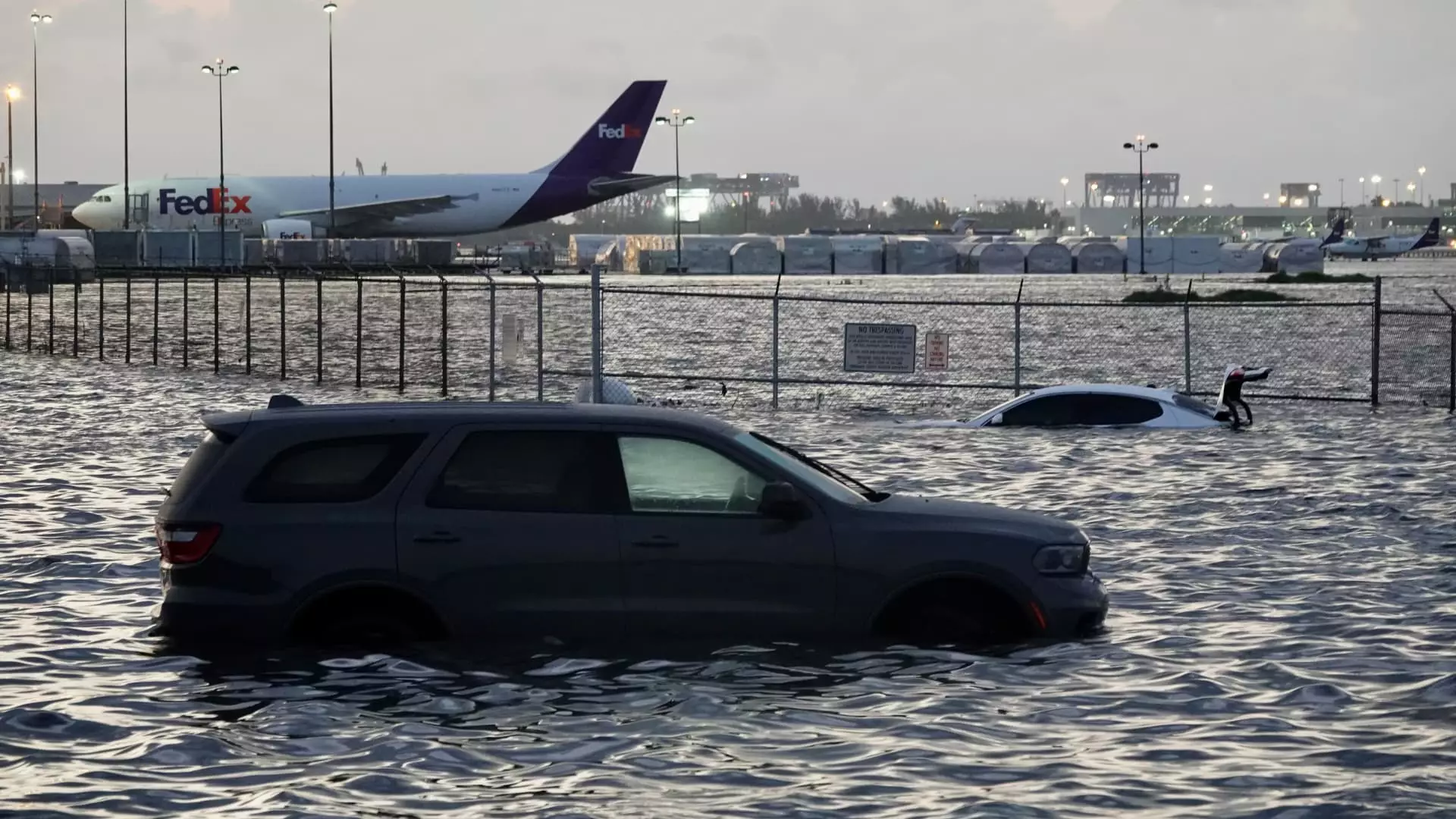The United States finds itself at a perilous crossroads concerning its infrastructure, a vital backbone that underpins the entire nation’s economy and daily life. Despite being the wealthiest country on Earth, America’s infrastructure remains severely underprepared to handle the escalating threats posed by climate change. This failure is glaring, affecting everything from airports and bridges to power grids and telecommunications. The reality is stark: much of our infrastructure decades old, designed for a climate that no longer exists, and increasingly vulnerable to devastating events.
The recent incidents—such as flooding at Fort Lauderdale’s airport and the malfunctioning bridge over the Harlem River—are not isolated anomalies but symptomatic of systemic neglect and underinvestment. These failures underscore the dangerous complacency that has persisted for years, allowing critical infrastructure to age without adequate reinforcement or modernization. It is a national security issue that we continue to overlook at our peril.
Climate Change as an Accelerant of Infrastructure Collapse
Climate change has transcended its distant threat status to become a tangible, destructive force impacting everyday life. Rising sea levels, extreme weather events, heatwaves, and unpredictable storms are not scientists’ speculative forecasts but current realities—yet infrastructure planning and policy remain woefully reactive instead of proactive.
The American Society of Civil Engineers’ latest report card assigns the nation a “C” grade overall, with specific sectors—airports, power, and telecommunications—faring even worse. The stark numbers from climate risk analytics firms reveal that nearly one-fifth of the nation’s power infrastructure faces major threats from natural disasters. These vulnerabilities are only set to grow as climate patterns become more erratic and intense.
What is most troubling is that most U.S. infrastructure was constructed in a different climate era—one characterized by less extreme conditions. This legacy infrastructure is ill-equipped to deal with the unfolding reality, and the consequences are now painfully visible. Rising floodwaters and heat-induced metal expansion are challenging existing structures’ integrity, threatening public safety and economic stability.
The Role of Politics and the CBDG Funding Gap
The political landscape is a significant obstacle to effectively addressing these infrastructural vulnerabilities. The rollback of climate science funding under former administrations has left the country flying blind in many respects. The deep cuts to agencies such as NOAA, FEMA, and the NIST have hampered our ability to gather the data essential for building resilient infrastructure.
Furthermore, the financial shortfall is staggering. The American Society of Civil Engineers estimates a need for $3.7 trillion over the next decade just to bring U.S. infrastructure to a “good” condition—vital enough to withstand the mounting climate threats. Unfortunately, political inertia, coupled with misguided austerity measures—like FEMA’s cancellation of nearly a billion dollars for disaster resilience projects—exacerbates this gap. Instead of investing in smart, durable infrastructure, policymakers have prioritized short-term savings, leaving future generations to bear the consequences.
The reluctance to allocate adequate resources is a form of reckless neglect. If the country refuses to confront the financial magnitude of this crisis, the economic fallout from infrastructural failures will be devastating. A nation that underfunds resilience out of short-sighted budget constraints is essentially gambling with its own future.
Investor Hesitation and the Future of Infrastructure Investment
The economic sector is also starting to realize that the old way of doing things is no longer viable. Climate risk analytics firms and financial institutions are increasingly concerned about the vulnerabilities of their investments. Questions about how to mitigate and insure against climate-related damages are now commonplace among investors.
Experts like Sarah Kapnick are emphasizing the importance of science-driven decision-making, but political attacks on science threaten to undermine this crucial foundation. Without reliable data and long-term planning, the private sector faces heightened uncertainty—an environment that discourages investment in resilient infrastructure. It’s a dangerous cycle: lack of investment and innovation leads to vulnerability, which in turn will cause more economic disruption.
The reality is that the nation’s infrastructure must be fundamentally redesigned and retrofitted to cope with the climate’s new normal. This requires bold political will, substantial financial commitment, and a recognition that climate resilience is not optional—it’s an existential necessity. If these elements continue to be absent, the decline of U.S. infrastructure will accelerate, turning a manageable crisis into an irreversible catastrophe.

